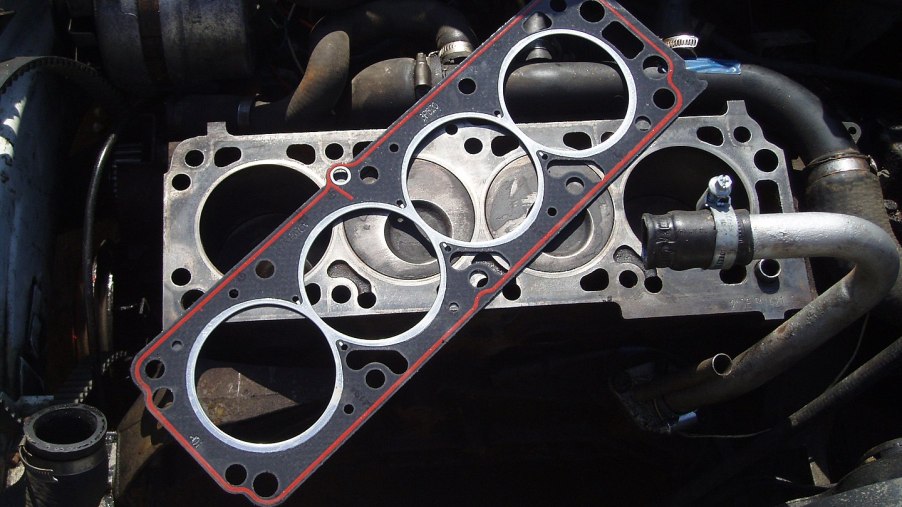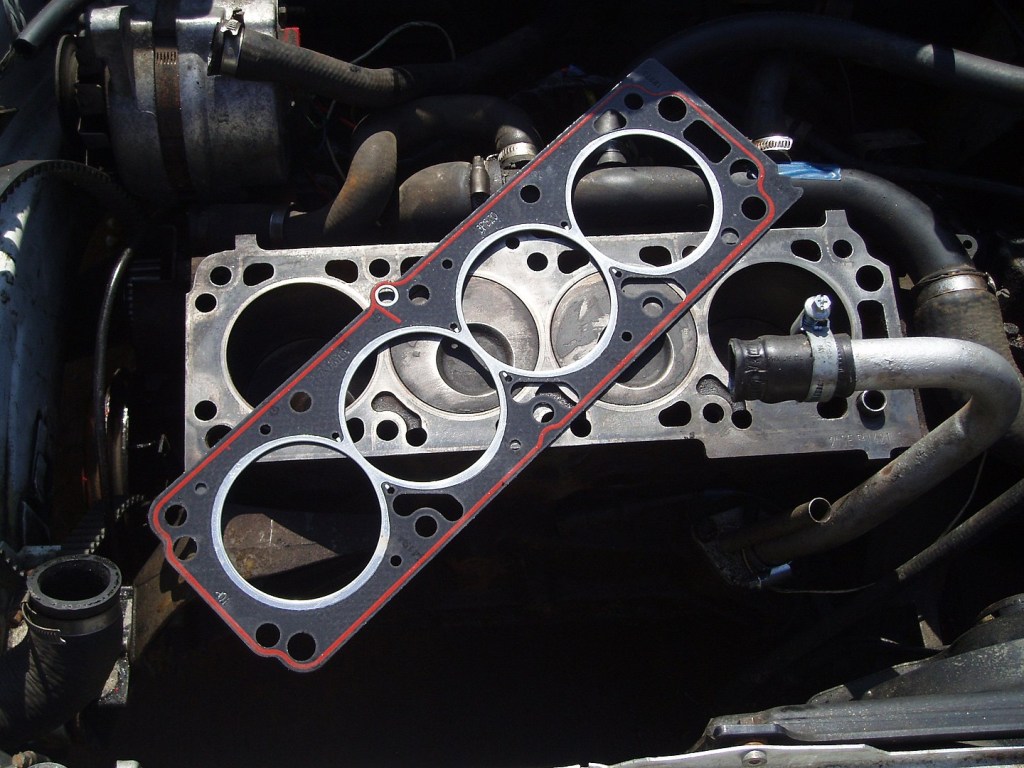
How Do You Know If Your Car’s Head Gasket Is Blown?
Your car’s engine is a wonderful, yet complicated air pump that runs on a mixture of gasoline, oil, and coolant. However, none of the three fluids are allowed to mix in the engine, and if they do, then there’s a likelihood that your engine’s head gasket is blown. But how do you know if it is?
What is a head gasket?
A head gasket is a “ringed panel that fits in between an engine’s cylinder head and block,” according to Bars Leaks. The head gasket acts as a barrier between the coolant channels and prevents coolant from leaking into the cylinder chambers. Due to the head gasket’s location, it faces a full range of temperatures and pressures, so over time, it’s likely to end up leaking or cracking, which leads it to “blow,” or fail.

There are symptoms of a blown head gasket
If your car has a leaking head gasket, there are some symptoms that will let you know there’s an issue. Here are the most common indicators that your engine’s head gasket has failed:
- An external leak between the engine block and cylinder head, typically around the exhaust manifold.
- White smoke from the exhaust pipe
- An overheating engine is another symptom, however, it can mean a range of issues
- Cylinder misfire
- A frothy white substance underneath your oil cap, which is the result of coolant and oil mixing
The first indication, of course, would be the check engine light suddenly coming on and the most likely the temperature gauge reading that the engine is overheating. If that ever happens, make sure to pull over immediately and shut off the engine to let it cool down.
Is it safe to drive a car with a blown head gasket?
As we said before, your car’s engine is basically a large air pump that operates with a lot of pressure. When the head gasket blows, it loses a lot of pressure and its cylinders won’t be operating with enough force to produce power, so you will experience a lot of power loss. Additionally, since coolant and oil will likely be leaking into the combustion chamber, important parts of the engine like the crankshaft and bearings won’t be lubricated properly and in turn will experience a lot of friction and undergo more damage.
Simply put, a blown head gasket can lead to more damaged engine internals if you happen to drive the car, so we advise to not drive it and call a tow truck to have it towed to a professional shop.

How much does it cost to replace a head gasket?
The cost to replace a head gasket can vary greatly as many automotive mechanics have a different labor rates and parts costs. Also, every car is different, so some engines might be easier to work on than others. If anything, the cost of labor will cost more than the cost of the parts, so you can expect to pay anywhere from $1,000 to $2,000 for the job. Although, your results may vary.
However, if you have the tools and proper experience, then you can always tackle the job yourself if you have a free weekend to do so. In that case, you’ll likely save around $700 to $800, but just keep in mind that it’s a really long and tedious job to take on.



